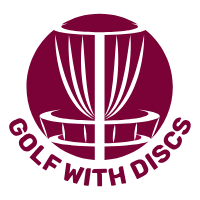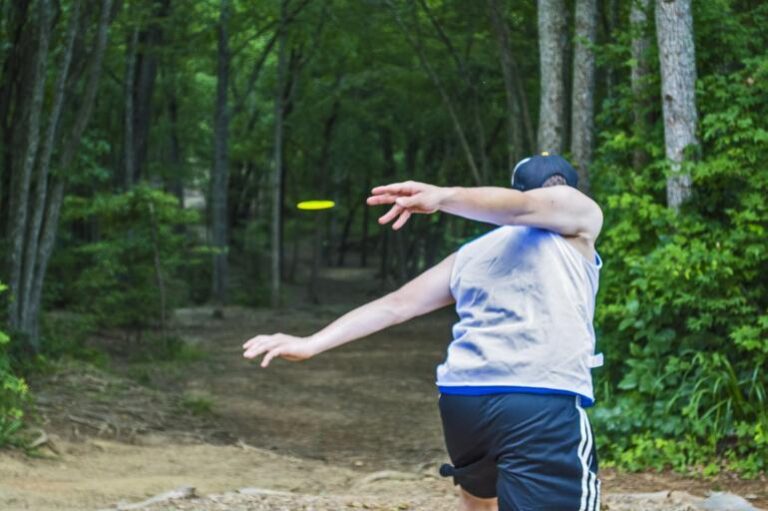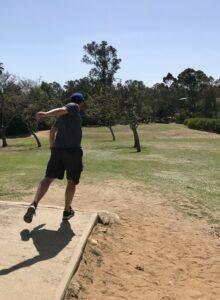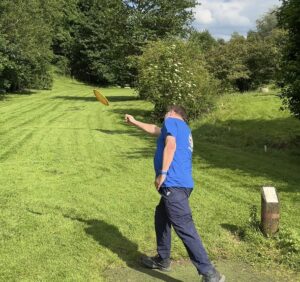Frustrated with throws that fall short? Disc golf distance throws are not about brute force but about precision and technique. Imagine harnessing your body like a well-tuned slingshot, delivering every ounce of energy into the disc. When you blend mechanics, physics, and timing into your game, your drives won’t just cover more ground—they’ll turn heads on the course.
Disc Golf Distance Throws and the Mechanics That Maximize Power
Build Better Body Mechanics for Disc Golf Distance
Your body is the engine behind disc golf distance throws—but are you maximizing its potential? It all starts with deliberate footwork. Forget flashy moves; a simple, well-executed X-step is all you need to channel energy smoothly from your legs to the disc. It creates momentum, transferring energy from your legs to your core and ultimately, the disc.
Next, activate your core. Imagine coiling a spring. As you pull back, twist, and then unleash the disc, your core acts as that powerful coil, transferring energy through your torso and into your throwing arm. Forget the bulging biceps – a strong core is the silent hero of distance.
Now, the arm swing. Picture a slingshot. Your arm is the sling, the disc the rock. Don’t just yank it back like a rusty lawnmower pull cord. Maintain a smooth, controlled pull across your chest, engaging your shoulder muscles in a coordinated effort, not a bicep solo act. And remember, it’s not about arm speed; it’s about efficient transfer of energy. Think whip, not cannon.
Understanding Disc Physics for Bigger Throws
A disc in disc golf distance throws is not just a frisbee—it’s a precision-crafted wing that depends on aerodynamics. Mastering nose angle and disc stability is the secret to turning average throws into extraordinary ones. Imagine the disc’s nose as a tiny rudder. Keep it slightly down, and the airflow over the wing creates lift, keeping your disc soaring. Crank it up, and you’ll nosedive into oblivion.
Then there’s disc stability. This ain’t your childhood frisbee. Discs come in a spectrum of stability, from “flippy pancakes” to “laser-guided missiles.” Beginners lean towards stable discs that resist turning over in the wind. As you progress, explore understable discs that “turn,” providing extra distance by utilizing the opposing force of the wind. Just remember, too much flip can be just as disastrous as nosediving.
Wind as Your Ally
Playing disc golf in the wind feels like nature’s ultimate prank, but with the right approach, it can be your secret weapon. A steady headwind can amplify the lift on understable discs, giving them extra glide and distance. However, tailwinds require stable or overstable discs to maintain control.
Think of it like sailing. In a headwind, you harness the resistance for power, while in a tailwind, you streamline for efficiency. Adjust your release angle and disc selection accordingly, and you’ll find yourself using the breeze instead of fighting it.
The Psychology of Timing
Why do some players struggle with timing despite hours of practice? It’s often a mental block, not a mechanical issue. Overthinking your throw can lead to hesitation, breaking the fluid energy transfer. Instead, focus on developing muscle memory through slow-motion practice. Imagine snapping a towel—start deliberate and controlled, and let the speed build naturally.
Timing and Release for Longer Disc Golf Distance Throws
Think of timing as the orchestra conductor who brings all the instruments together at the perfect moment. Pull back too early, and your body’s momentum fizzles out before reaching the disc. Pull back too late, and you’re fighting against that momentum. The sweet spot is a fraction of a second before your plant foot hits the ground – that’s when your body is fully loaded and ready to unleash the disc.
Mastering timing takes practice, but a good trick is to focus on your hip rotation. As your plant foot hits, snap your hips open towards the target, letting that stored energy flow through your torso and arm. You’ll feel it – that explosive release is the money shot.
How to Perfect the Hyzer Flip for Added Distance
Ready to level up? Learn the hyzer flip. Don’t worry, it’s not a Harry Potter spell, but a powerful technique. Throw the disc on a slight hyzer angle (nose angle tilted to the right for right-handers), but with enough speed to “flip” it flat or even anhyzer (tilted left) mid-flight. This utilizes the wind’s lift and the disc’s natural turn to squeeze out extra distance, turning “meh” throws into “whoa” bombs.
Final Thoughts on Excelling at Disc Golf Distance Throws
There you have it, fellow disc golfers – a fusion of insights into the art and science of disc golf distance dynamics. As you embark on applying these tips to your game, remember, it’s not just about power but the synergy of elements working in harmony.
Experiment, tweak, and find what feels right for you. Your disc golf journey is a personal adventure, and each throw is a page in the story you’re writing on the course. So equip yourself with knowledge, step onto the tee pad with confidence, and let those discs soar to new heights. Happy throwing!
Common Questions About Disc Golf Distance Throws
To improve your disc golf distance throws, focus on refining your body mechanics, including proper foot placement and a smooth pull-through motion. Practice timing your release to maximize energy transfer and understand how disc stability impacts flight. Incorporate drills to build muscle memory and experiment with different throwing techniques like the hyzer flip to find what works best for your style.
The X-step is a powerful technique that builds momentum by aligning your body for maximum energy transfer. By crossing your trailing leg behind your lead leg, you create a smooth flow that channels energy from your lower body into the throw. This motion is essential for increasing distance while maintaining balance and accuracy.
For longer throws, beginners should use stable discs that resist turning too much in flight, providing consistent control. Intermediate and advanced players can experiment with understable discs, which turn during flight and gain extra glide, making them ideal for maximizing distance. Tailor your choice to factors like wind conditions and your throwing power.
Wind significantly influences disc golf throws. A headwind increases lift, allowing understable discs to glide farther, while a tailwind stabilizes flight but reduces lift, favoring stable or overstable discs. Adjust your release angle and throwing power based on wind direction to maintain control and maximize distance.
The hyzer flip is a throwing technique where the disc is released on a hyzer angle (tilted downward) with enough speed to flip flat or slightly upward during flight. This technique utilizes the disc’s natural turn and glide to achieve longer, straighter throws. It’s especially useful for navigating narrow fairways or capitalizing on a tailwind.
Lighter discs generally require less power to achieve long flights, making them suitable for beginners and players with slower arm speeds. Heavier discs offer more stability in windy conditions and are often favored for power throws. Plastic type affects grip, durability, and flight consistency, with premium plastics providing the best balance for distance throws.
Drills like slow-motion X-steps, towel snaps, and one-step throws are excellent for refining timing and energy transfer. These drills focus on syncing your plant foot, hip rotation, and release point to create a fluid motion. Repeating these exercises helps build muscle memory for consistent long throws.
Nose angle controls the initial trajectory of the disc. Keeping the nose slightly downward promotes lift and glide, allowing the disc to fly farther. If the nose is angled too high, the disc will stall and lose distance. Practicing nose angle control is crucial for maximizing distance and accuracy.
A strong core is essential for generating power and maintaining balance during a throw. Core muscles transfer energy from your legs to your upper body, ensuring a smooth and powerful release. Incorporating exercises like planks, Russian twists, and medicine ball throws into your training can significantly improve your distance.






